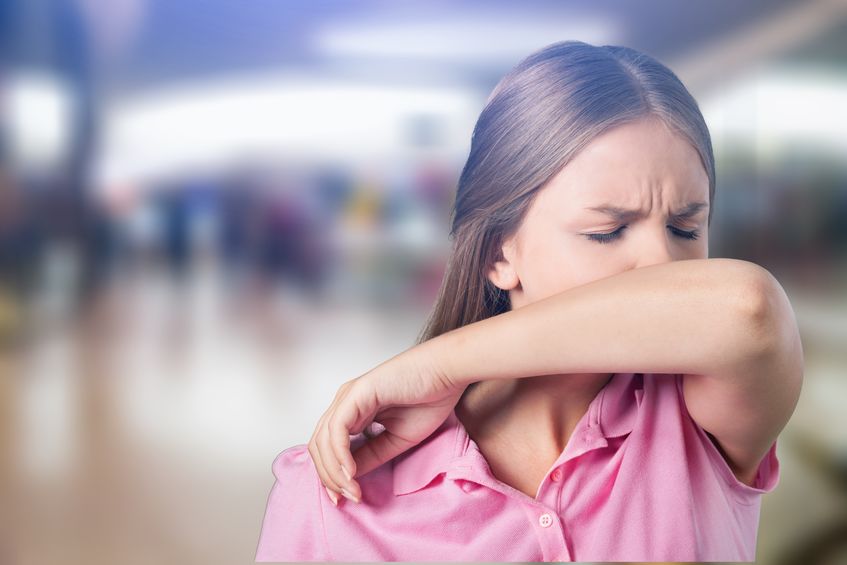Coronavirus, Cold, Flu, or Allergies?
The symptoms of COVID-19 (Coronavirus Disease 2019) are vague, which may make it hard to tell whether you might have COVID-19 or something else. Though we currently don’t have all the information about COVID-19, the symptoms can be similar to those of the common cold, flu (influenza virus), and/or allergies.
The main symptoms we know COVID-19 causes are dry cough, fever, and shortness of breath (difficulty breathing). COVID-19 is caused by a new coronavirus and has no cure or vaccine. Severe disease has led to hospitalizations and deaths.
Like COVID-19, the seasonal flu also is caused by a virus and can result in mild to severe illness or even death. The flu usually starts suddenly with possible symptoms of fever, cough, sore through, body aches, runny or stuffy nose, headaches, and tiredness. Getting the flu shot annually can help prevent the flu and reduce the severity if you do get the flu. There is no “cure” for the flu, but medications like Tamiflu® (oseltamivir) can help shorten the duration of the flu if started right away. Without treatment, the flu usually lasts around 5 to 7 days. It is now the spring of 2020, and the flu season is nearing an end, but some cases do still exist.
The common cold is caused by a virus and usually leads to symptoms that peak after about 2 or 3 days. Symptoms of the common cold include sneezing, stuffy or runny nose, sore throat, cough, and/or post-nasal drip (mucus dripping down your throat). There is no cure or vaccine for the common cold, and symptoms usually go away after about 7 to 10 days.
With spring underway, some people may experience seasonal allergies as well.
Allergies usually are a result of substances in the air (such as pollens, weeds, molds, etc.), also known as allergens. Allergens cause your body to react with typical symptoms of sneezing, runny nose, and/or itching.
Not only do these ailments share similar symptoms, but they also share the fact that there is no medicinal “cure” for them, medicines will only help with symptoms, or possibly reduce the overall burden of flu or allergies. Therefore, those experiencing mild symptoms might not benefit from a trip to the emergency department.
The devastating effects of COVID-19 have taken our world by storm. Despite efforts to reduce the spread of the coronavirus, many communities and countries still are experiencing a climb in cases and deaths. We’ve seen an unprecedented demand for personal protective equipment (PPE), such as face masks and gloves, even before the centers for disease control (CDC) recommended wearing masks in public. Health systems have been overwhelmed and are doing their best to manage the changes as they come, while also keeping healthcare staff safe.

Coronavirus
There are several reasons states and the CDC have put stay-at-home orders in place.
- First and foremost, the stay-at-home orders are helping reduce the spread of the virus. If you must leave the house, please wear a mask. Many people with COVID-19 experience mild, or no symptoms at all, which could lead to accidental spread of the virus.
- Face coverings help protect those around you if you are carrying the virus. For those folks with mild symptoms, it is recommended to stay home and treat symptoms with over-the-counter medications as appropriate.
- Many primary care doctors are providing virtual care visits for those who feel sick and want to see a doctor but aren’t severe enough to go to the hospital. If symptoms are mild and do not require hospitalization, your doctor and most emergency departments probably will not test you for COVID-19.
- It is a good idea to call your doctor’s office first, unless you are experiencing symptoms that feel like an emergency. In order to avoid overwhelming our already flooded health care systems, and further prevent the spread, only those experiencing more serious symptoms of COVID-19 (like trouble breathing) are advised to seek emergency medical care.
We’re all in this together, and we each can do our part in protecting ourselves and others by following the recommendations from our health officials and the CDC. Stay safe!
Resources:
1. CDC COVID-19, what to do if sick: https://www.cdc.gov/coronavirus/2019-ncov/if-you-are-sick/steps-when-sick.html
2. CDC COVID-19 Hub: https://www.cdc.gov/coronavirus/2019-nCoV/index.html
3. CDC Flu: https://www.cdc.gov/antibiotic-use/community/for-patients/common-illnesses/flu.html
4. CDC Common cold: https://www.cdc.gov/antibiotic-use/community/for-patients/common-illnesses/colds.html
5. CDC Face Coverings: https://www.cdc.gov/coronavirus/2019-ncov/prevent-getting-sick/diy-cloth-face-coverings.html
6. Seasonal allergies, American College of Allergy, Asthma, and Immunology: https://acaai.org/allergies/seasonal-allergies












